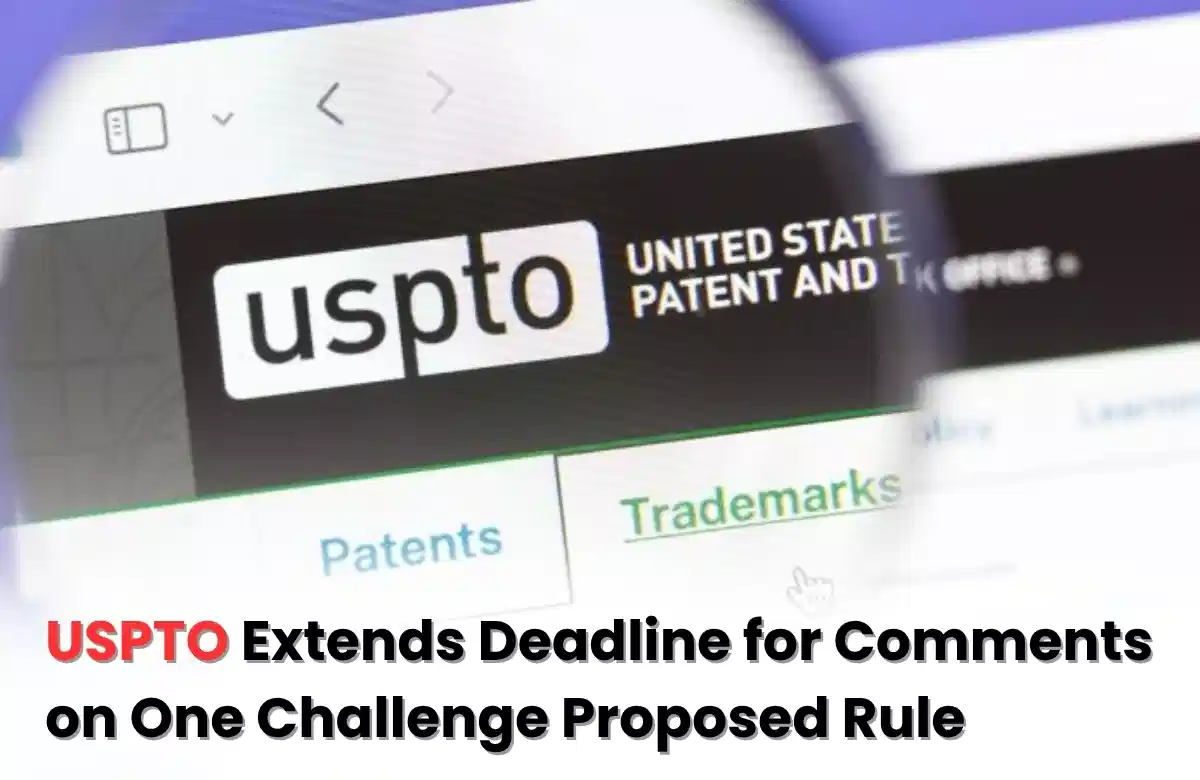
The U.S. Patent and Trademark Office (USPTO) has rolled out a new proposal called “One Challenge,” and it’s all about making the patent trial and appeal process simpler and smoother. Even though the USPTO One Challenge NPRM update is the main patent and trademark body in the U.S., its moves often set trends worldwide, so don’t be surprised if other countries start exploring similar changes. To make sure everyone gets a say, the USPTO has also extended the deadline for public comments, giving inventors, businesses, and legal experts more time to share their thoughts. Keep reading to find out what this update is all about.
How Will the USPTO’s New “One Challenge” Rule Change Patent Review Procedures?
To really understand the USPTO One Challenge NPRM update and proposal, it helps to know why it was needed in the first place. The U.S. Patent and Trademark Office (USPTO) introduced the “One Challenge” Notice of Proposed Rulemaking (NPRM) on October 17, 2025, as part of an effort to update the rules under 37 C.F.R. § 42.108, the section that explains how inter partes reviews (IPRs) are handled by the Patent Trial and Appeal Board (PTAB). USPTO’s One Challenge NPRM update. The main idea behind this proposal is to cut down on repeated or overlapping patent challenges and make sure the PTAB focuses only on claims that haven’t already been heavily litigated or settled in court.
- This update aims to reduce unnecessary, duplicate challenges that can drag on for years and make patents less reliable.
- It also gives more predictability to patent owners — once a claim is upheld in one forum, it can’t be challenged again, which helps strengthen confidence in patent rights.
- On the flip side, it puts more pressure on challengers, who now have to plan their moves carefully since they might need to give up certain invalidity arguments if they choose to go through the PTAB process.
- It’s also expected to influence litigation strategies, pushing companies to file earlier or coordinate through joint petitions instead of repeatedly targeting the same patent.
Overall, the “One Challenge” proposal is designed to streamline the system, make it fairer, and bring more consistency to how patent disputes are reviewed in the United States.
Read Also: USPTO’s New Director John Squires Signs Off First Patents in Crypto and Healthcare Tech
What Is the New Deadline for USPTO’s One Challenge NPRM Comments?
The USPTO One Challenge NPRM update has shared a new update on its “One Challenge” proposal, which focuses on improving how patent challenges are handled by the Patent Trial and Appeal Board (PTAB). The proposal was first published in the Federal Register on October 17, 2025, with the original deadline for public comments set for November 17, 2025. The reason for the extension of the date of the public comments such as:
- After getting several requests from stakeholders, industry groups, and legal experts asking for more time to go through the proposal and share their feedback, the USPTO decided to extend the comment period by 15 days.
- That means the new deadline for submitting comments is now December 2, 2025.
- The USPTO said this short extension will give people more time to provide thoughtful input, ensuring that all voices are heard before the rule is finalized.
- However, the USPTO also made it clear that no further extensions are likely, so this is the final chance for stakeholders to weigh in before the rule moves toward completion in 2026.
Read Also: IndiGo and Mahindra’s ‘6E’ Trademark Battle Escalates as Mediation Breaks Down
Conclusion
The USPTO One Challenge NPRM update proposal marks an important step toward making the patent review process more efficient and fair. By giving everyone a little more time to share their views, the agency is showing that it values public input before making big policy changes. With the new comment deadline set for December 2, 2025, this is the final chance for stakeholders to have their say before the rule is finalized in 2026 — a change that could shape the future of patent challenges in the U.S. and beyond. Keep reading the latest IP news like this.
